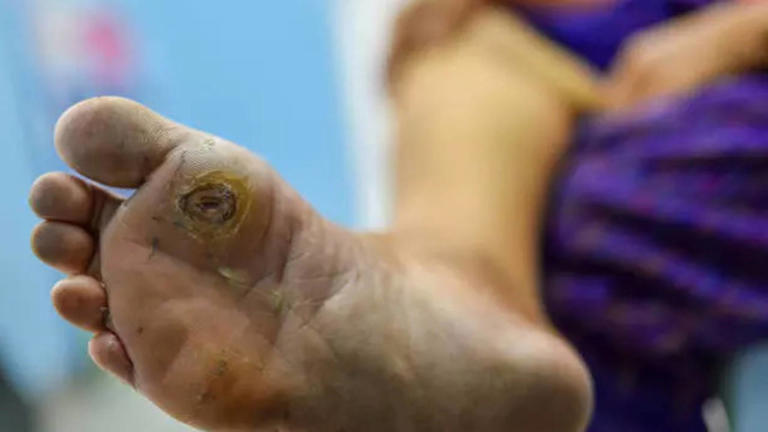
Table of Contents
New Delhi: When diabetes takes hold, it steadily worsens almost every part of your body. But according to medical professionals, there are situations in which you may not even know that your blood sugar levels are elevated, and certain skin signs can alert you to undiagnosed diabetes.
Diabetes affecting the skin is a dead relief that your blood sugar levels are out of balance and need to be corrected.
Warning signs of diabetes on skin Related News |

Know What Is Claudication, A Common Leg Cramp That Can Cause Erectile Dysfunction, Deadly Heart Attack

Health Tips For Type-2 Diabetes To Lose Weight
The American Academy of Dermatology Association states that people with type-2 diabetes frequently have various skin problems and disorders, including fungal and bacterial infections, itching, blisters, etc. If the condition is not properly treated or cured, it will get worse.
Some red flags for diabetes include:
Yellow, red, or brown patches

Home Remedies for Ghamoriya (Prickly Heat Rash)

Poppy Seeds: Know Health Benefits Of This Culinary Powerhouse That Range From Relieving Pain To Boosting Libido
According to doctors, these spots start small, look like pimples, and eventually develop into hard, swollen areas of skin.
Necrobiosis lipodica, another name for this disorder, is a shiny, porcelain-like skin in which blood vessels are also clearly visible. It also causes skin irritation and itching. Necrobiosis lipoidica is a mild disorder that can be managed before it worsens and threatens other health problems.
Dark skin areas
According to medical professionals, the presence of dark spots or bands around your neck, underarm or groin is a typical indicator of pre-diabetes. This condition occurs due to excess insulin in the blood.
This skin disorder, sometimes called acanthosis nigrican1, mainly affects people who are overweight.
Blisters
People with diabetes may develop frequent blisters on their skin, often on the hands, feet, or both. These blisters are not painful, but they often look like significant burns.
These blisters, often called diabetic bullae 2, can cause serious scarring if not treated properly.
Granuloma annulare
Granuloma annulare is a skin disease that mainly affects young people and often presents as ring-shaped raised rashes or pimples on the hands and feet.
Medical professionals believe that type-2 diabetes, which is not painful or contagious but can cause significant psychological distress, can also be caused by small skin lesions and certain medications.
Necrobiosis lipoidica diabeticorum
It is a rare type of diabetes-related skin disease that mainly affects the lower legs and results in reddish-brown patches. Although the primary cause of this skin disease is unknown, doctors suspect inflammation of blood vessels.
This skin disorder, which typically occurs in individuals with type 1 diabetes, destroys skin proteins, including collagen.
Although necrobiosis lipoidica dibacterum is more common in smokers, estimates show that less than 1% of people with diabetes actually have the condition.
Disclaimer: Nothing on this page should be construed as formal medical advice; Instead, the tips and ideas are for general information only. Before starting any exercise regimen or making any dietary changes, always consult your doctor or dietitian.
READ ALSO:5 Things That Are Vitally Important But Your Doctor Won’t Tell You
READ ALSO: skin cancer 7 warning signs You should never ignore

